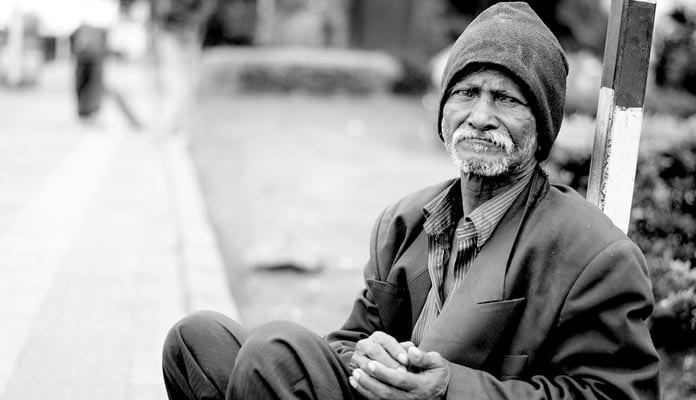Diabetes, one of the most talked about diseases across the world is posing an enormous problem for the poor in India. Recent study shows how they might be at a higher risk of acquiring the sugar disease.

The WHO also estimates that 80 per cent of diabetes deaths occur in low and middle-income countries
Poverty in India is increasingly becoming urbanised. More than 30% of urban population lives below the poverty line. As these people struggle to make both ends meet, the increase in expenditure due to the onset of diabetes could mean severe hardships for the poor.
The study, published in the Lancet Diabetes and Endocrinology Journal is funded by the Indian Council of Medical Research and the Department of Health Research in the Ministry of Health, and it covered 57,000 people across 15 states and Union Territories.
One of the major findings of the research was the mean prevalence of diabetes. This was found to be 7.3 per cent across all 15 states and UTs, with the rates varying from 4.3 per cent in Bihar to 13.6 per cent in Chandigarh.Comparatively, in China about 10% of its adult population has diabetes. In USA, the prevalence is close to 9%.The report highlights that in the urban areas of the more economically advanced regions, diabetes is found to be higher among people from low socio-economic groups than those from higher socio-economic groups. This can be seen in the case of Chandigarh, where the rate of diabetes was 26.9 per cent among people from low socio-economic groups, considerably higher than the 12.9 per cent among people from high socio-economic backgrounds.On a similar trend, diabetes rates in the urban areas of Punjab, were 16.1 and 11.9 per cent, respectively for low and high economic groups.
So why this difference in the rates? Well according to Dr Nikhil Tandon, head of the department of Endocrinology and Metabolism at AIIMS, this is because the poor live in a more stressful urban environment. Their dietary practices and relative sedentariness along with consequent weight gain and body fat are the primary reasons for this increasing risk of diabetes.
Understandably, being poor can be stressful. The constant shortage of money, inferiority complex and unhealthy living conditions all contribute to the chronically high stress levels. Along with this, expensive electricity and gas, high cost of fresh ingredients and lack of time makes the poor rely on unhealthy fast foods, often rich in sugar, that boosts up their insulin levels. As said by Dr Tandon, "Even those who belong to lower income groups have access to junk food."
This provides more than ample room for diabetes to surface more among the poor.
In the study, the body weight, height, waist circumference and blood pressure of each person was measured and glucose tolerance tests were performed to diagnose diabetes and prediabetes for the study. Almost half of the people in the study did not know they had diabetes until they were tested, it said.
According to the results, diabetes was twice as common in urban areas (11.2 per cent) than in rural areas (5.2 per cent) on an average. Overall, as pointed before, diabetes was more common among people with a higher socioeconomic status, compared to people with a low socio-economic status.
Offering another perspective to this problem, Dr Tandon says that "Other reasons for this shift could be the increased awareness of healthy practices among affluent sections, which means they are engaging in physical activity and making necessary dietary changes to keep non communicable diseases at bay."
Most healthy practises are also more expensive and so automatically unavailable to the poor.
The results of the study are crucial also because the extent of diabetes prevalence identified in this study is significantly higher than most other studies that took place in the past years.
The study recognises that since 70% of the population in India lives in rural areas, even a small increase can translate into several million more people requiring chronic care, especially in areas with poor access to health care.
Dr Viswanathan Mohan, the study's senior author and president, Madras Diabetes Research Foundation, Chennai, points to the acute problem of an increasing social and economic divide in India. "As the overall prosperity of individual states and the country as a whole increases, the diabetes epidemic is likely to disproportionately affect the poorer sections of society, a transition that has already been seen in high income countries," he explains.
Another finding of the study is related to the prevalence of prediabetes. This was found to be 10.3% across all 15 states, varying from 6.0% in Mizoram to 14.7% in Tripura. In most states,
the rate of pre-diabetes exceeded the rate of diabetes. Prediabetes, simply put, is the trace of high blood-sugar but not high enough to be considered as type2 diabetes.
The authors also noted that the study did not differentiate between type 1 and type 2 diabetes.
In regard to finding a solution for this gruelling problem of the poor, Dr Vijay Viswanathan of M V Hospital for Diabetes, Chennai says, "Addressing the increasing prevalence of diabetes in India will require solutions at many levels, including increased awareness of the disease and its complications throughout the country and especially in rural areas - as well as the establishment of cost-effective prevention programmes.
(With inputs from PTI)
Read more on Diabetes
DoctorNDTV is the one stop site for all your health needs providing the most credible health information, health news and tips with expert advice on healthy living, diet plans, informative videos etc. You can get the most relevant and accurate info you need about health problems like diabetes, cancer, pregnancy, HIV and AIDS, weight loss and many other lifestyle diseases. We have a panel of over 350 experts who help us develop content by giving their valuable inputs and bringing to us the latest in the world of healthcare.














